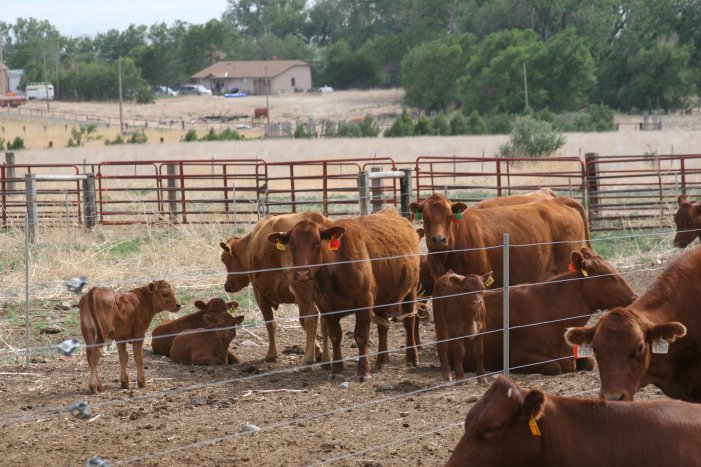
By Karla H. Jenkins, UNL Cow/Calf, Range Management Specialist and Rick Funston, UNL Beef Reproductive Physiology Specialist
As summer approaches many areas in Nebraska are at 60-70% of normal rainfall for this time of year. Due to the soil moisture deficit of the 2012 drought, producers need to reduce 2013 stocking rates by 20-30% and delay turnout as long as possible to allow pastures to recover. For some producers this may mean confining at least a portion of the cow herd through breeding season. When breeding in confinement, several factors need to be considered. Research has shown overall conception rates are higher when cows are on an increasing plane of nutrition just before and during breeding. Increasing the energy density of the diet can be done by increasing the amount of feed or increasing the percentage of an energy dense feed such as distillers grains, corn gluten feed, soyhulls, sugar beet pulp, or even silage. Cows will need about 2 feet of bunk space per head and if the calves are still with the cows, they will need about 18 inches of bunk space. When bulls are added to pens with cows being limit fed energy dense diets, producers need to make sure there is bunk space for the bulls (at least 2 ft/hd) and that an adequate amount of the diet is added for the bulls. Depending on the size and condition of the bull, 15-18 lbs of TDN (total digestible nutrients) are required. For help balancing rations for confined cows and bulls, contact the local county extension office. For more information on feeding cows in confinement, visit http://beef.unl.edu.
An advantage of having cows in confinement is the relative handling ease for implementing synchronization and/or artificial insemination (AI) strategies. Estrus synchronization has application for both AI and natural service as a way to improve profitability of the cow-calf enterprise. If producers synchronize their heifers or cows and use AI or natural service, more cows will calve earlier in the calving season. If a cow calves within the first 21 days of each calving season the first nine years of her life, she will have the equivalent of one and a half to two more calves than her later-calving counterparts. Input costs are similar; however, output can vary greatly depending on when calving occurs during the calving season. Calves born early in the calving season have greater weaning and carcass weights, greater marbling scores and quality grades, and heifer first pregnancy rate is greater compared to later born contemporaries. Synchronization systems can be as simple as turning bulls in and injecting prostaglandin to all beef heifers or cows 5 days later. This system is very effective in cycling beef females. More complex systems facilitate timed AI and protocols to induce cyclicity in non-cycling beef females. Producers can review synchronization and other reproductive management information on the Applied Reproductive Strategies in Beef Cattle website at http://beefrepro.info.